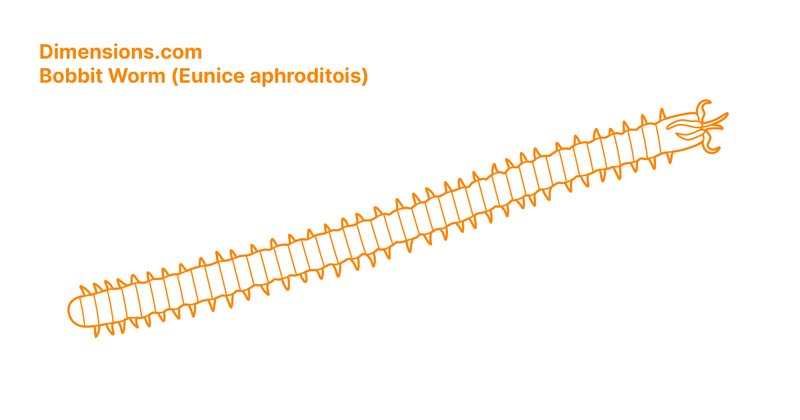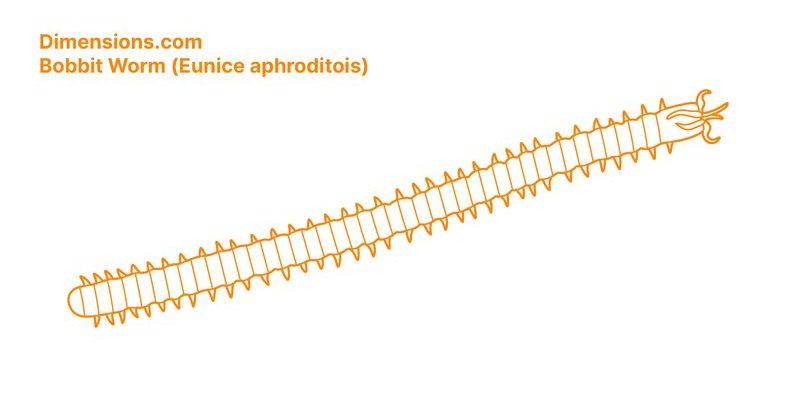
Molting isn’t just about shedding skin; it’s a crucial part of how Bobbit worms grow and develop. Think of it like a snake shedding its skin—it’s a time when the creature makes room for its growing body. Understanding this process can help you appreciate these astonishing creatures even more, whether you’re studying marine life or maintaining a home aquarium. So, let’s dive into the world of Bobbit worms and unravel the mysteries behind their molting and growth patterns!
What is a Bobbit Worm?
If you’re not already familiar with Bobbit worms, let’s break it down. These creatures, belonging to the *Eunice* genus, are **polychaete worms** often found in tropical and subtropical waters around the world. They live in burrows on the ocean floor, blending into their environment with remarkable effectiveness. Imagine a creature that can camouflage itself perfectly, waiting patiently for unsuspecting prey to pass by—this is how the Bobbit worm operates.
What makes them particularly interesting is their hunting technique. Bobbit worms have long, segmented bodies with sharp jaws that snap quickly when they sense movement. They can strike with lightning speed, making them fierce predators. If you ever find yourself watching a documentary about ocean life, keep an eye out for these incredible hunters!
The Importance of Molting in Growth
Now, let’s get into the nitty-gritty of molting. Just like crabs and other arthropods, Bobbit worms must undergo molting to grow. During this process, they shed their outer cuticle—think of it like a new outfit for an expanding body. As they grow, the old cuticle becomes restrictive, so they must let it go to make way for a new, larger one. This process is critical for their survival and growth.
Molting is not a one-time event but a recurring part of a Bobbit worm’s life. They go through multiple molts as they grow from juvenile stages to their adult forms. Each time they molt, they not only change their size but can also regenerate lost body parts. This regeneration ability is fascinating and shows just how resilient these creatures can be!
How Often Do Bobbit Worms Molt?
You might be wondering how frequently these worms shed their skin. The frequency of molting can depend on several factors, including age, size, and environmental conditions. Generally, younger and smaller Bobbit worms will molt more often than their older counterparts. While juveniles may shed their skin several times a year, adults might only do so once or twice annually.
Conditions like water temperature, food availability, and overall health can also influence how often molting occurs. In ideal conditions, a Bobbit worm’s growth is accelerated, leading to more frequent molts. Think of it as a dance with nature: when the conditions are right, they thrive and shed their old skins to embrace the new.
The Molting Process: Step by Step
Let’s break down the molting process itself. It’s a fascinating series of events that unfolds in stages:
- Preparation: Before shedding, the worm starts absorbing water, which helps it loosen its old cuticle. You can imagine this as inflating a balloon to make it expand.
- Breaking Free: As it absorbs more water, the old cuticle starts to crack. The worm will pull itself out of this old skin, almost like slipping out of tight clothing.
- Expansion: After shedding, the Bobbit worm’s body may be vulnerable, and it needs time to expand and harden the new cuticle. During this phase, it hides and may be less active as it recuperates.
- Regeneration: If the worm has lost any parts, it may start regenerating them during this time. This is a remarkable adaptation that many marine species, including Bobbit worms, exhibit.
This process shows just how adaptable and resilient these creatures truly are. It’s almost like nature’s way of giving them a fresh start every now and then.
Signs of a Bobbit Worm Preparing to Molt
So, how can you tell if your Bobbit worm is getting ready to molt? There are a few signs to watch out for. First, observe their behavior. If your worm becomes less active or seems to spend more time in its burrow, it might be preparing for that crucial shedding process.
Additionally, you might notice a change in appearance. The body can look slightly duller or cloudy right before a molt. It’s like a fashion model preparing for a big runway show—there may be some behind-the-scenes prep work before the main event!
Here’s a quick checklist of signs indicating a Bobbit worm is about to molt:
- Decreased activity levels
- Cloudy or dull appearance
- More time spent in hiding
Recognizing these signs can be helpful for aquarists who want to ensure their Bobbit worms are healthy and thriving.
Challenges and Risks During Molting
While molting is a natural and necessary process, it’s not without its challenges. During this vulnerable time, Bobbit worms can face various risks. One major concern is the potential for predation. Since they are less active and somewhat defenseless right after shedding, they may become easy targets for hungry fish or other predators in the tank.
Moreover, if the water quality isn’t up to par, it can lead to complications. Poor water conditions or excessive stress can hinder the molting process. If a worm struggles to shed its old skin, it could end up in serious trouble. Keeping an eye on your aquarium’s water parameters—such as temperature and pH levels—is crucial for supporting healthy molting.
Bobbit worms are truly remarkable creatures that remind us of the beauty and complexity of marine life. Understanding their molting and growth patterns gives us a deeper appreciation for how these worms adapt and thrive in their environments. Whether you’re a marine enthusiast, an aquarist, or just a curious mind, knowing about the life cycle of Bobbit worms can enhance your understanding of these fascinating creatures.
Next time you think about the ocean, remember the Bobbit worm’s journey—how it grows, adapts, and sheds its skin to embrace new possibilities. Nature has its own way of showcasing resilience, and the Bobbit worm is a perfect example of that. So, let’s continue to explore and learn about the wonders of marine life, one fascinating creature at a time!

